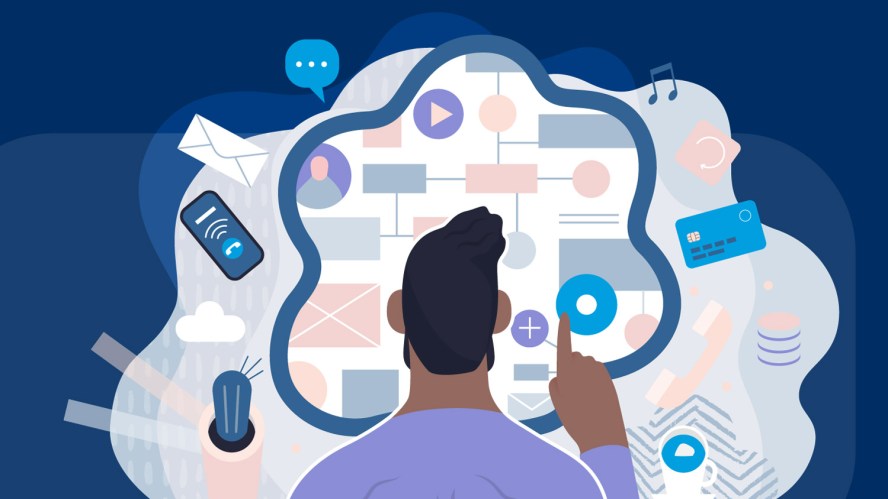How Personalisation Transforms Customer Experience



Want to deliver a personalised customer experience? Here’s how you can meet their expectations.
Salesforce Staff
Personalisation is a key ingredient for creating outstanding customer experiences. Why? Because customers want to be seen as individuals, and they feel it when you see them as generalised personas.
Findings from the State of the Connected Customer Report, which combines insights from 13,000+ consumers and nearly 4,000 business buyers worldwide, show what could be at stake for a company if they don’t create a personalised customer experience.
More than half — 56% — of customers expect offers to be personalised. Companies that don’t tailor their experiences to an individual’s needs may risk losing customers altogether. Customers’ loyalties can’t be taken for granted, with 71% of consumers saying they’ve switched brands at least once in the last year.
Personalised engagement should also encompass how and when a brand interacts with a customer — and a unified, speedy, omnichannel, real-time experience is what they are demanding.
Customers turn to an average of nine different channels to communicate with companies.
Personalising customer experiences with purpose
Customers want the brands they’re buying from to not only deliver great customer service, but to also stand for a bigger purpose.
For this purpose to really sing in your customers’ eyes, it needs to meet their expectations, as well as connect with their personal values, interests and concerns.
Customers expect the brands they’re supporting to practice what they preach — if you rally behind climate change or publicly speak about moving the dial on gender equality, you need to show how you’re contributing to these causes in the actions you take each day.
Making the data work for you
With customers making countless online interactions, the opportunities to create personalised engagement from customer data has never been richer. But the sheer scale of what’s possible presents a challenge: how do you use all that data to optimise for the individual, in the moments that matter?
Gathering, analysing and unifying data in productive — and non-invasive — ways is key to building the foundations of a truly personalised customer experience and shaping a satisfied customer.
For a 360-view of the customer at all times, you need to bring all of their data together and use AI to join the dots across all customer touchpoints, so you have all the context you need to provide a full tailored CX.
While collecting data can offer invaluable insight into your customers’ preferences, if you’re not transparent about your processes and the type of data you’re collecting, you could risk losing your customers’ trust altogether.
As with any collection of personal data, addressing customers’ privacy concerns needs to remain front of mind. This is especially so given that 74% of customers say communicating honestly and transparently is more important now than ever before, yet 64% of consumers say most companies aren’t transparent about how they use personal information.
To retain your customers’ trust when collecting data, keep the following tips in mind:
- Explain your reasons for collecting certain data. If it’s to form a better picture of your customers’ values so that you can adjust your business model to meet their needs, then tell them. 79% of consumers say they’d be more likely to trust a company with their information if its use were clearly explained. Customers are more likely to be on board with data collection if they’re aware of the end goal.
- Create a privacy policy so that the information is clearly laid out and accessible to customers
- Establish opt-in mechanisms. Giving customers control over the data they hand over will help to build trust and reassure the customer that you respect their privacy and decision.
Get a deeper understanding of how customer behaviours are changing and how to get ahead of them.



Tools for personalisation
There’s a whole range of ways to personalise effectively depending on your position in the business. For example:
- If you’re in marketing, try personalised messaging to deliver relevant offers to your customers. Try personalised messaging to share what actions you’re taking to support a particular cause that’s important for that particular customer.
- For customer service, predictive tools help agents solve problems before the customer has realised they exist.
- AI can help automate manual, time-intensive tasks so sales reps can spend more time building valuable relationships with customers. Side note: sales reps report that they spend only a third of their time selling — we think that has something to do with less than half expecting to attain their quotas.
- Could part of your profits go towards a particular non-for-profit organistion? Could customers have a choice of four charities so they’re exerting some choice and able to select a charity that feels personally significant for them?
But of course, customers don’t see any rep or agent as part of one of those departments. Rather, for the customer, any interaction with any department is an interaction with a single entity: your brand.
Customers bank on having a similar experience with any area of your business.
So for a truly frictionless and personalised experience, you need a platform that breaks down silos and aligns and integrates those different functions.
Sound like a big task? We’re here to help. Salesforce CRM connects all of your data on a single platform so you can connect to your customers in a whole new way.
Frustrated by personalisation challenges?
Here are the 4 obstacles to overcome and how.























